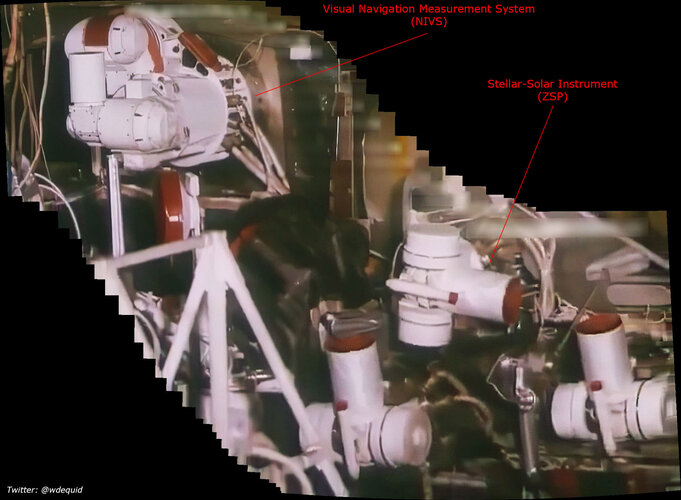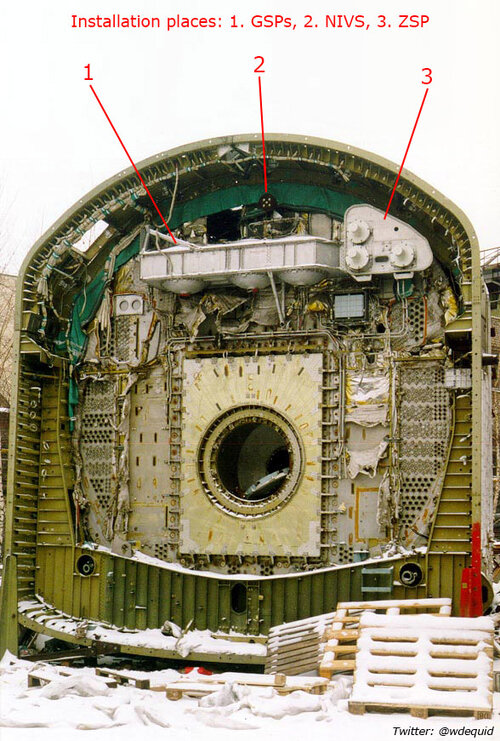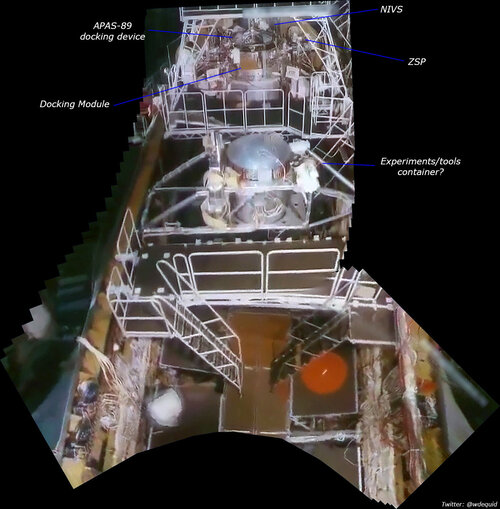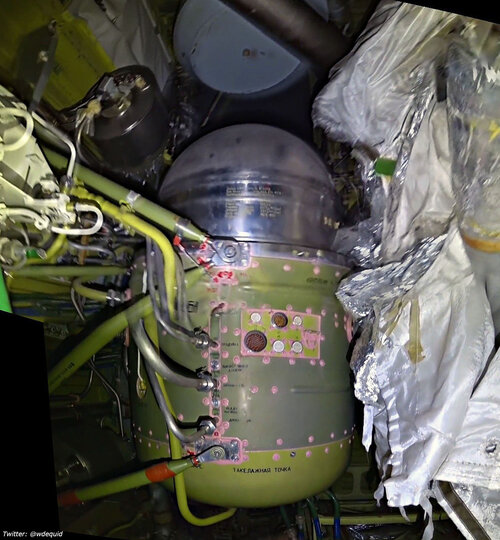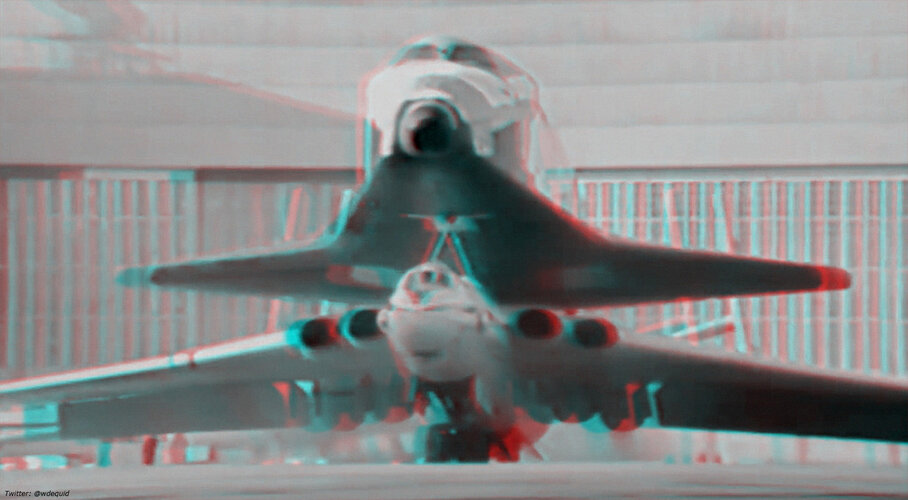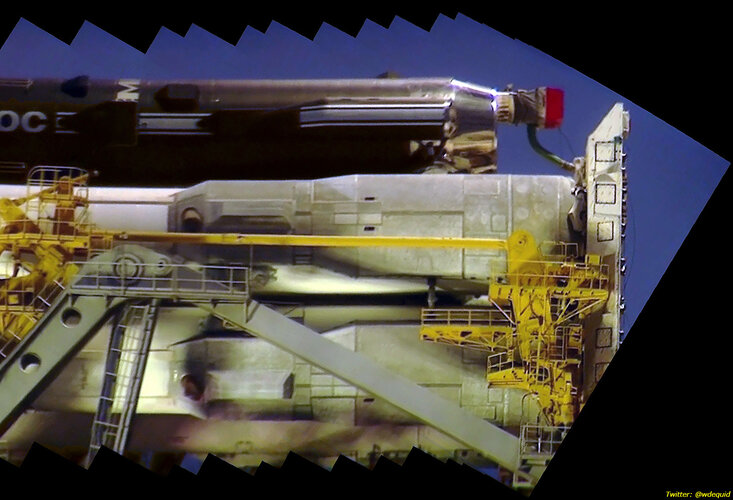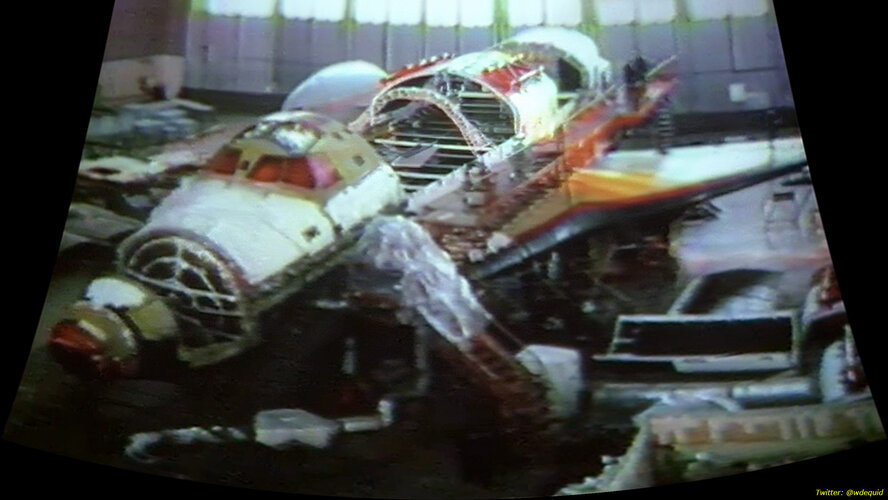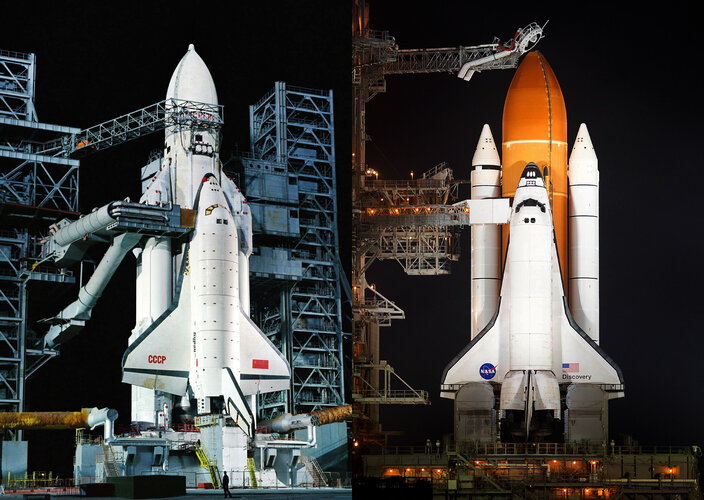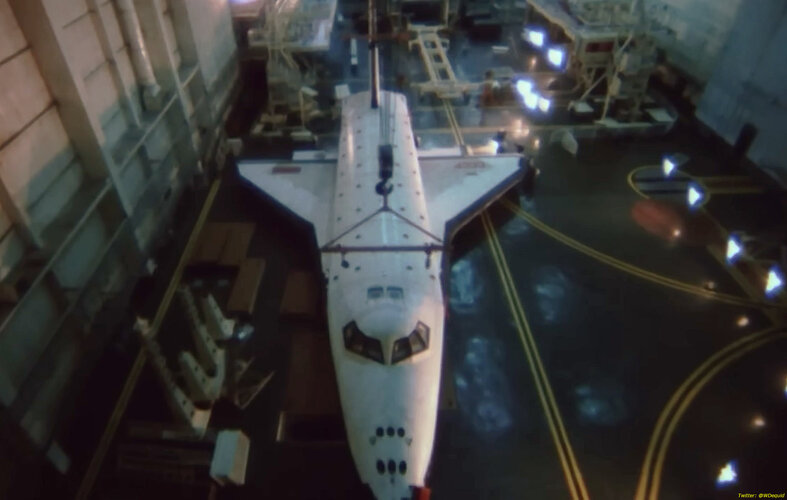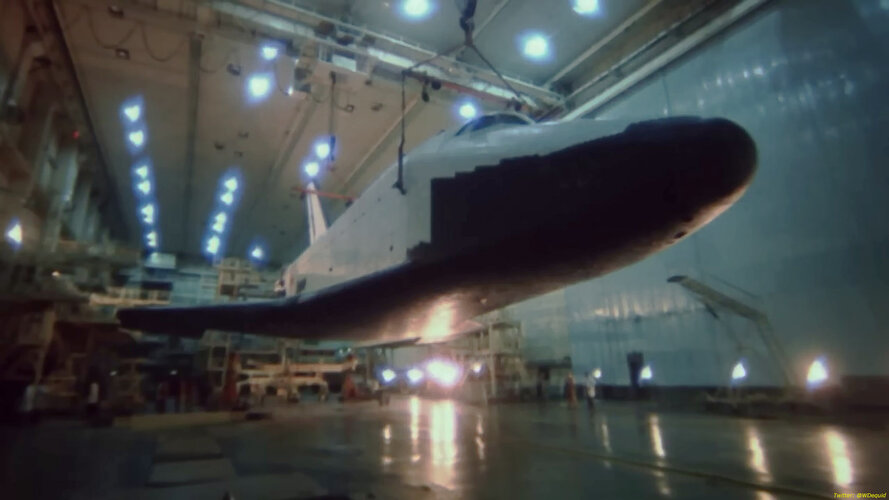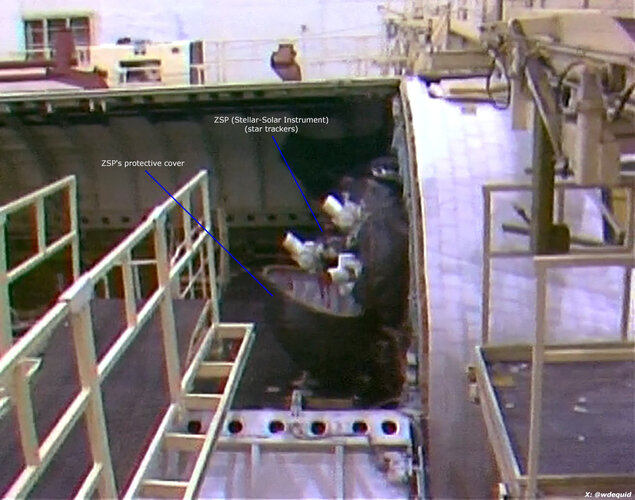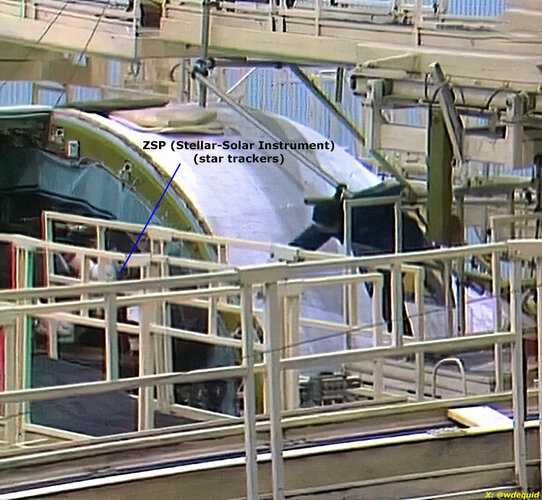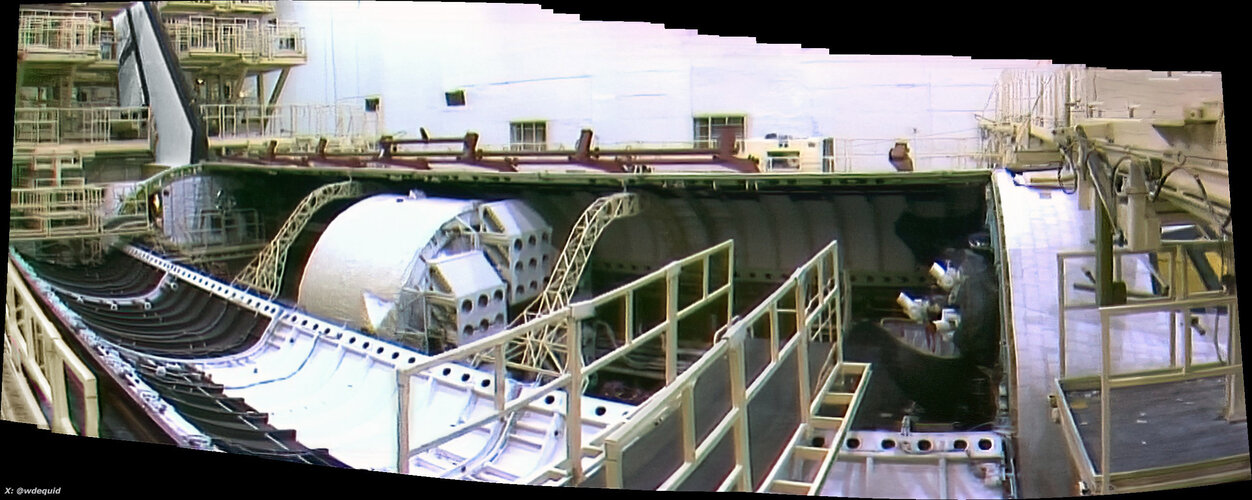Willythekid
I really should change my personal text
- Joined
- 13 July 2018
- Messages
- 194
- Reaction score
- 1,063
Diagram of the Buran control system. The heart of it was the computer system, which consisted of 8 Biser-4 multiprocessor computers (red color). In total the system had 32 processors. The image also shows in blue the quartz generator with its five redundancy channels.


